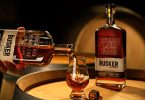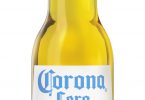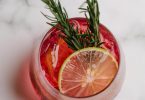Those green shoots…..
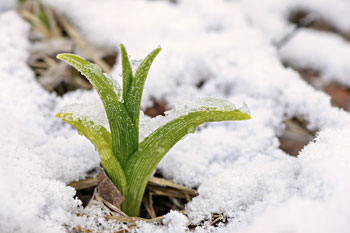 The latest Nielsen figures indicate a level-pegging of on-trade volumes MAT to the beginning of April this year with value growth of 2% to €3.26 billion.
The latest Nielsen figures indicate a level-pegging of on-trade volumes MAT to the beginning of April this year with value growth of 2% to €3.26 billion.
What’s encouraging for the on-trade is that on-trade beer volumes are slightly up (by 0.2% MAT to the beginning of April this year) while off-trade beer volumes are down by over 5%.
Ale and No Alcohol/Low Alcohol Beers show the most growth in volume sales at over 3% and over 8% respectively MAT to the beginning of April but it should not be forgotten that these volumes are dwarfed by the lager and stout volumes.
The lager market shows encouraging volume growth of over 2% MAT to the beginning of April.
But the main lager brands are clearly now being challenged by the insurgent value lager segment along with new entrants (see Growth in ‘value’ segment of lager market, Drinks Industry Ireland February-March issue, page 30).
This must be a concern to Heineken – and a long way behind this brand, Budweiser and Carling.
Value market making a dent
The ‘value-for-money’ lager market is indeed making some degree of noise at present in the on-trade, nudging up share of the lager market to 12 or 13%.
Value-for-money lagers held around 12% of the lager market MAT to February this year and in keeping with all sectors of the market, bore witness to consumers trading up around the Christmas period which led to a two share-point switch at this time.
Tuborg and Fosters appear to be the clear value winners at present while initial value-for-money pioneer Bavaria and C&C Group’s Tennents brands have shown little movement in all this.
Bavaria was taken on by the C&C Group when it purchased the Gleeson Group and has probably been relegated to stable-mate of Tennents, actually owned by C&C Group.
With little or no Above-The-Line activity on these brands it really does therefore all come down to consumer choice in those bars stocking a number of value brands.
As another industry observer comments, “In strong working class areas with an element of daytime drinking, value-for-money lagers play out. And in rural areas with pubs under huge downward pressure, v-f-m lager has taken a strong play. In the North West it’s up to 18 or 19% of the lager market there”.
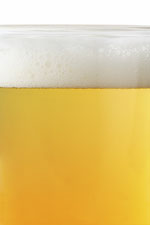
The lager market shows encouraging volume growth of over 2% MAT to the beginning of April.
Stout sales – bellweather for the on-trade
The relative health of this sector of the beer market represents an important bellwether for the industry as a whole as one in three pints sold through the on-trade is a Guinness stout.
Sales of Guinness were down 6% in the six months to December 31st according to Diageo’s Interim Results for H1 of its financial year while volume sales of stout show a fall of over 2.5% MAT to March this year. ?
Cider sales rise
Like the lager market, cider sales have grown by nearly 2% in volume MAT to the beginning of April.
Spirits sales
On-trade spirits sales volumes however are less encouraging than lager and cider sales with a drop of around 5.5% MAT to the beginning of April.
Whiskey fares even less favourably, witnessing a drop of nearly 7% while even vodka suffers a decline in volumes of over 6%.
By and large, the spirits figures would seem to indicate that the spirit & mixer package has failed to win over the consumer with some in the industry suggesting that the spirit & mixer serve is not consistently brilliant.
“The value equation for spirit & mixers doesn’t stack up for the consumer,” explains one industry source, “One of the elements is the physical service, the glass, the ice, the garnish – especially the glass which often falls short of expectations. We’re back into that old chestnut of the category where women are making on-trade choices and resisting the present offering.
“Those pubs performing very well are those producing service in the serve and producing interesting mixers, those maintaining their margin and giving their consumers the feeling that they’re getting value-for-money even if the price is not that cheap.”
This is relevant as we approach the Summer months when the on-trade can expect a higher spend on sprits and mixers.
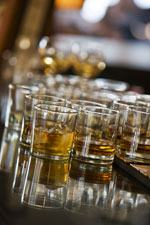
On-trade spirits sales volumes show a drop of around 5.5% MAT to the beginning of April.
Wine sales
While on-trade wine sales MAT to the beginning of April are unavailable, on-trade sales of wine have been disappointing showing a decline of over 6% in volume to the end of February 2014 following a fall of over 10.5% MAT to February 2013 although industry sources expect some degree of recovery in this market as more outlets turn to food sales to help supplement turnover.
Urban/Rural divide
Rural and urban vintners are likely to remain divided over the extent to which any economic recovery has reached down to their own neck of the woods with urban premises continuing to fare much better than rural.
“The Dublin on-trade is showing clear signs of recovery, driven by good performance in the city centre in particular,” comments LVA Chief Executive Donall O’Keeffe, “There’s also a sense that the suburban trade has stabilised with good operators also reporting growth. In overall terms, we expect the Dublin trade to grow modestly in 2014 and have a more optimistic outlook for the business than at any time since 2007.”
Helping stimulate the urban market have been encouraging levels of investment and new styles of outlet opening in both Dublin and Cork.
What’s ‘on’ today?
Between the pub, the restaurant or the pub restaurant, the question for many in the industry must be “What now really constitutes the core of the ‘on-trade’?”.
Is it the pub, the restaurant or the pub restaurant?
Bear in mind food writer John McKenna’s recent comments that restaurants are now wresting the alcohol spend from pubs.
Off-trade
In the off-trade, total sales volumes have again contracted by over 4% MAT the beginning of April.
Again, cider shows growth of 6.5% MAT to the beginning of April but again, off-trade spirits volumes see a decline, this time it’s of over 10%.
Unlike the rest of the world, domestic off-trade sales of whiskey show a volume decline of over 13% MAT to the beginning of April.
Similarly off-trade vodka volumes show a decline of nearly 9% to the beginning of April 2013.
Off-trade sales of table wine are down by over 7% MAT to the beginning of April.
NI on-trade
Northern Ireland is witnessing even stronger recessionary figures than RoI with the on-trade there declining somewhat faster than has been the case here.
The Chief Executive of Pubs of Ulster Colin Neill explained that there are currently 1,273 pubs there where there had been 1,481 in 2007.
“We’d be coming from a smaller base so it’s a bigger percentage fall,” he explains, “That said, we’re seeing a slowdown of closures. We’re finding that pubs now tend to be taken over rather than closed down. There’s a value for pubs now.”
The most recent significant sale in NI was that of a considerable part of the Botanic Group of pubs which was sold off as one entire unit comprising a number of flagship pubs (NAMA retains its grip on the other section of the Group).
“This went above the price the Receiver had been looking for,” says Colin, “We’ll still see pubs change hands but I think we’re close to the end of our closures – barring one or two in remote areas.”
And the on-trade there has seen indications of a return to trade growth since last September staying fairly consistant through to the present.
“We’ve seen an increase week-on-week and although there’s no extra money here, people are a little less concerned with their jobs and are spending what they have,” he says.
2014 outlook
Despite the figures here – good, bad or indifferent – in the end all will depend on consumer expectations, job growth and what the Government will do to achieve it’s next declared €2-3 billion saving come October.
And with the increase in domestic property prices beginning once again, so too will the amount of property tax being paid – and that’s before the introduction of water charges and over the next hill, health charges – all of which are likely to have an adverse effect on consumer spend.
Overall, it’s estimated that the on-trade market will decline by another 4.5% in 2014 but despite this, optimism remains an on-trade constant.
Those that continue to offer a high quality product to consumers at decent prices will weather the economic times since those willing to pay the higher price in such pubs and restaurants also perceive a higher price/value ratio for their spend.

Rural and urban vintners are likely to remain divided over the extent to which any economic recovery has reached down to their own neck of the woods.



